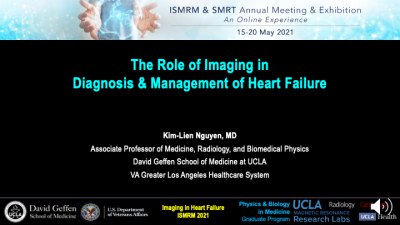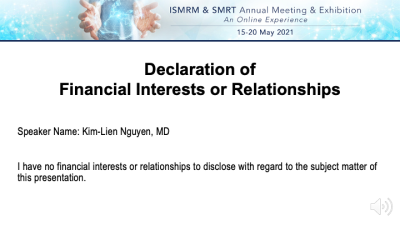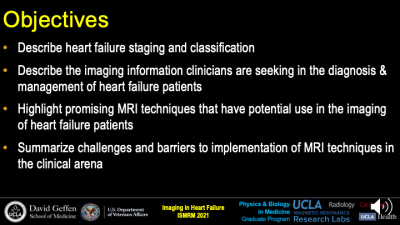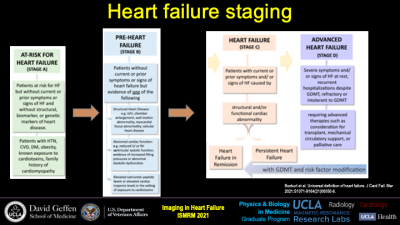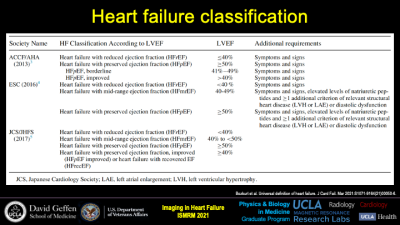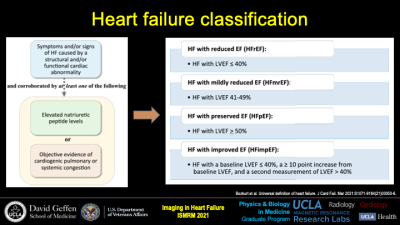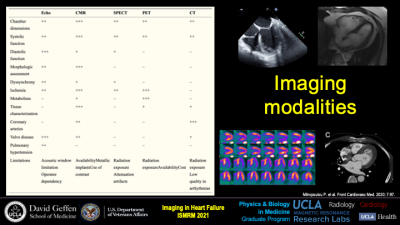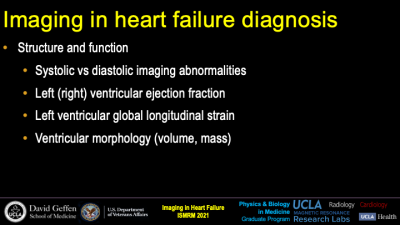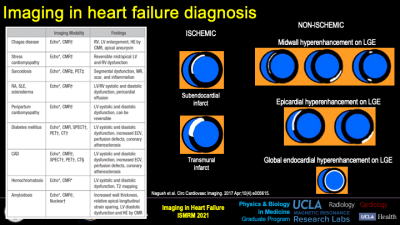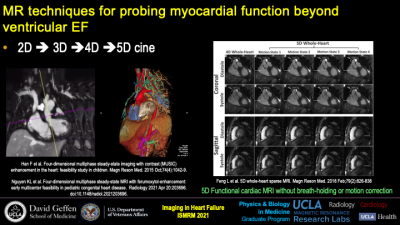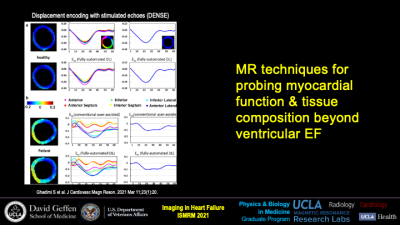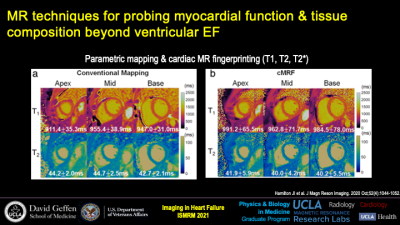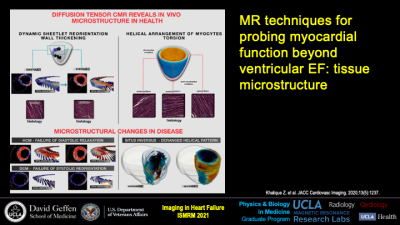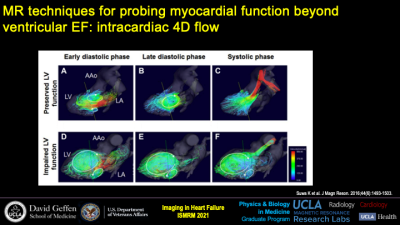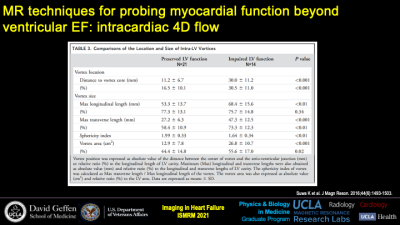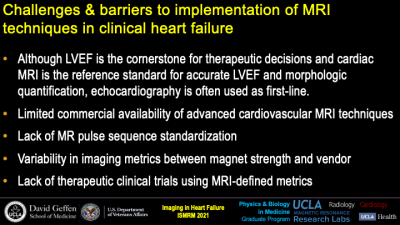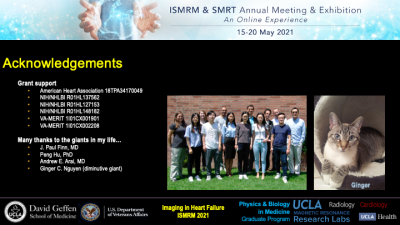The Role of MRI in Diagnosis & Management of Heart Failure
1Departments of Cardiology and Radiology, University of California, Los Angeles, Los Angeles, CA, United States, 2Departments of Cardiology and Radiology, VA Greater Los Angeles Healthcare System, Los Angeles, CA, United States, 3Physics and Biology in Medicine Graduate Program, University of California, Los Angeles, Los Angeles, CA, United States
Synopsis
Heart failure is a complex clinical syndrome with many causes. Although imperfect, the left ventricular ejection fraction (LVEF) serves as a surrogate marker for combined LV function and structural phenotyping of heart failure. Cardiac imaging provides information about structure, tissue composition, and function. As a diagnostic modality with high spatial resolution and no ionizing radiation exposure, cardiovascular MRI is valuable for accurate EF quantification and phenotypic characterization. However, several barriers exist for widespread implementation of quantitative MRI in heart failure. Examples of challenges include accessibility to and standardization of cardiovascular imaging pulse sequences for probing myocardial tissue structure and function.
